Well when I say another new toy, I mean this one is only just to play with occasionally.
My local astronomy club Kernow Astronomers acquired a number of Solar scopes to do outreach work with a number of local schools. One of the three is a Lunt 60THa. While not being used for outreach, the scope is available for club members to use, and I managed to borrow it for a week to play with.
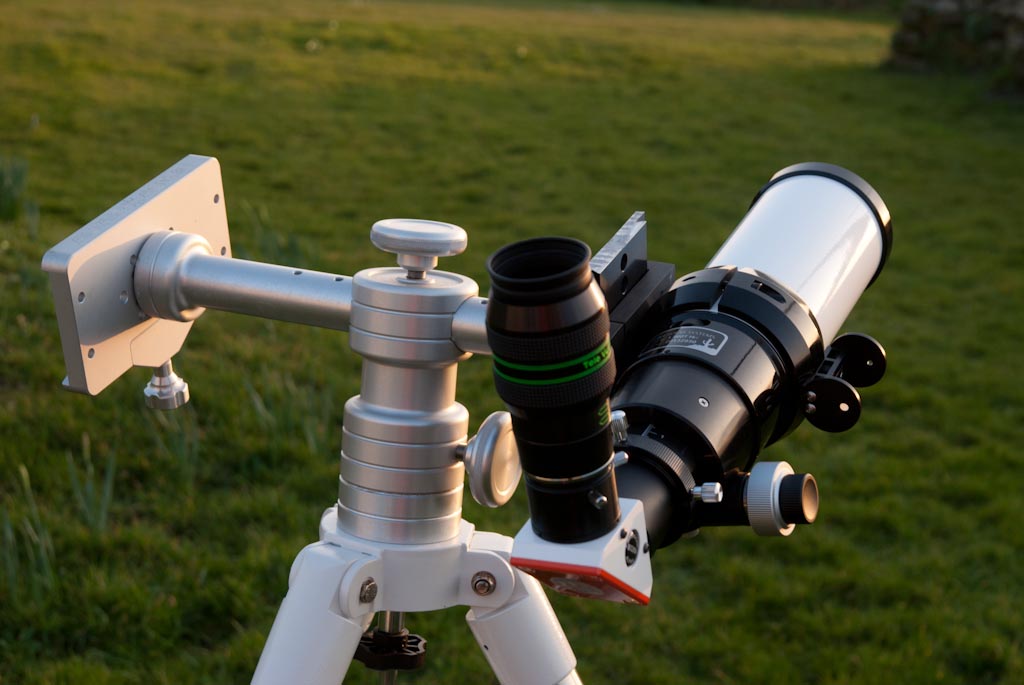

One of our club members did acquire a Coranado PST a few years back and the comparison between this and the Lunt is quite remarkable. The first thing I noticed on first looking through the Lunt, is that the image is so much brighter and displays an image that shows considerably more contrast compared with the PST.
On the Lunt, I initially used one of my el-cheapo Meade 26mm eyepieces and did find that the image detail improved when I moved the image 30% to 50% off axis.. Thinking this was due to the quality of the eyepiece , I plugged in my 14mm Televue Delos eyepiece – which now provided a full eyepiece view of the solar disk – and still got a better image when the point of interest was placed about 20 to 30% off axis. The amount of off axis placement , while being less with a better quality eyepiece, was still slightly annoying. This didn’t affect views of the prominences, but just the surface features. Why this should happen is anyone’s guess and needs further investigating.
Maybe I’m nit picking, but if I had just spent the best part of £1600 I would be a bit miffed. However, the views are still amazing! Large prominences actually show ‘nebulous’ structure – something hardly noticeable when viewed through a PST – and surface detail like Plages, Filaments and Granulation are easily seen – details which are completely noticeable by their absence through a PST.
We had about three sessions over the weeks we had the scope and really enjoyed just having a quick looksie when ever the skies were clear.
We also managed to get some images. We first tried coupling up a DSLR with a 1.25in nosepiece fitted, but found you couldn’t rack in the focuser enough to achieve focus. The trick – which we discovered later – is to remove the nosepiece adaptor and screw the T mount directly onto the diagonal. Rather than go any further with the DSLR, we coupled up my Imaging Source DMK21AUG618 webcam and rattled off a dozen or so AVI’s. The results of which are shown below.
All the images are a result from a 2000 frame AVI, which has been run through Registax 6 and combined using the best 100 frames. Varying degrees of Wavelet sharpening were then applied before loading the files into Photoshop for final processing.
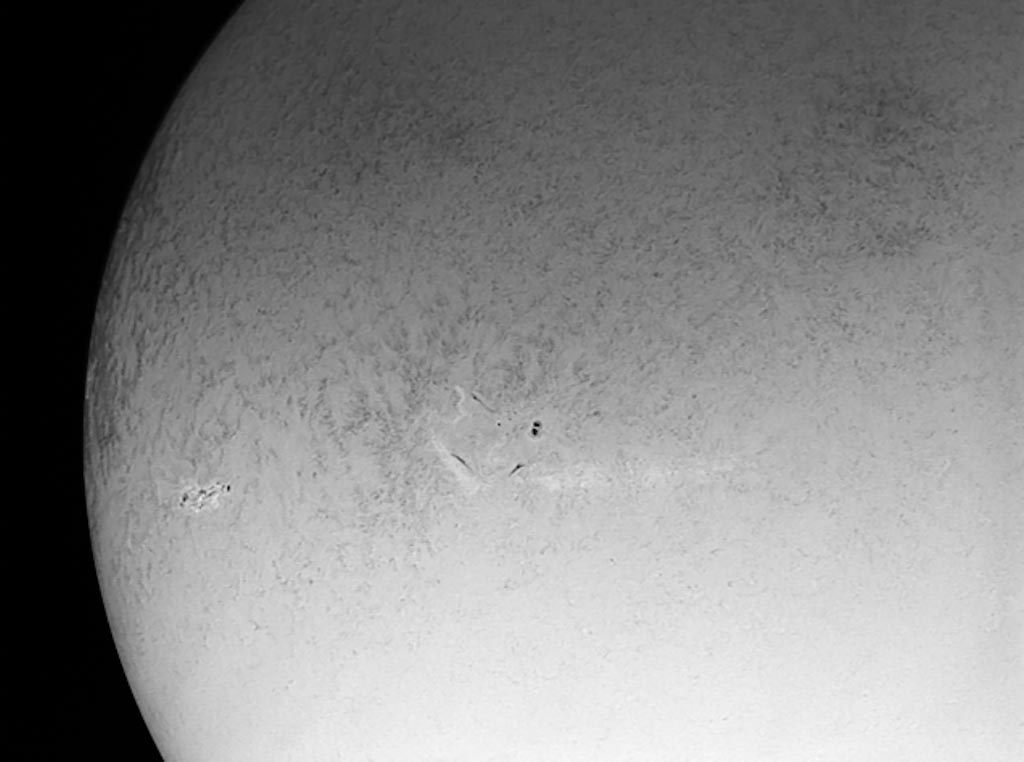
This was taken a couple of days before the other two images below. There was a lot more high thin cloud around, which accounts for a slightly softer and less detailed image. The highlights were beginning to burn out during capture too , so I need to be mindful not to set the end point quite as high. 90% would allow for any brightness changes that take place during the capture sequence.
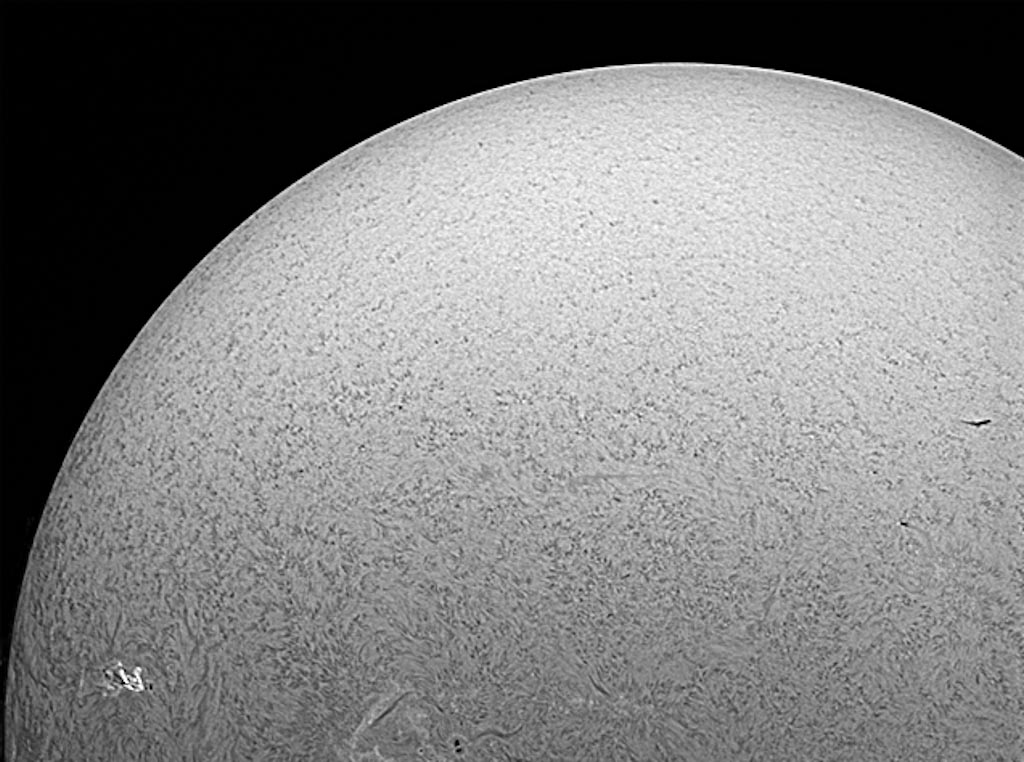
While a bit more contrasty, this one has been pushed a little too far I think. The problem is that with one less step of curves, this looked a little dull – a tricky one to process!
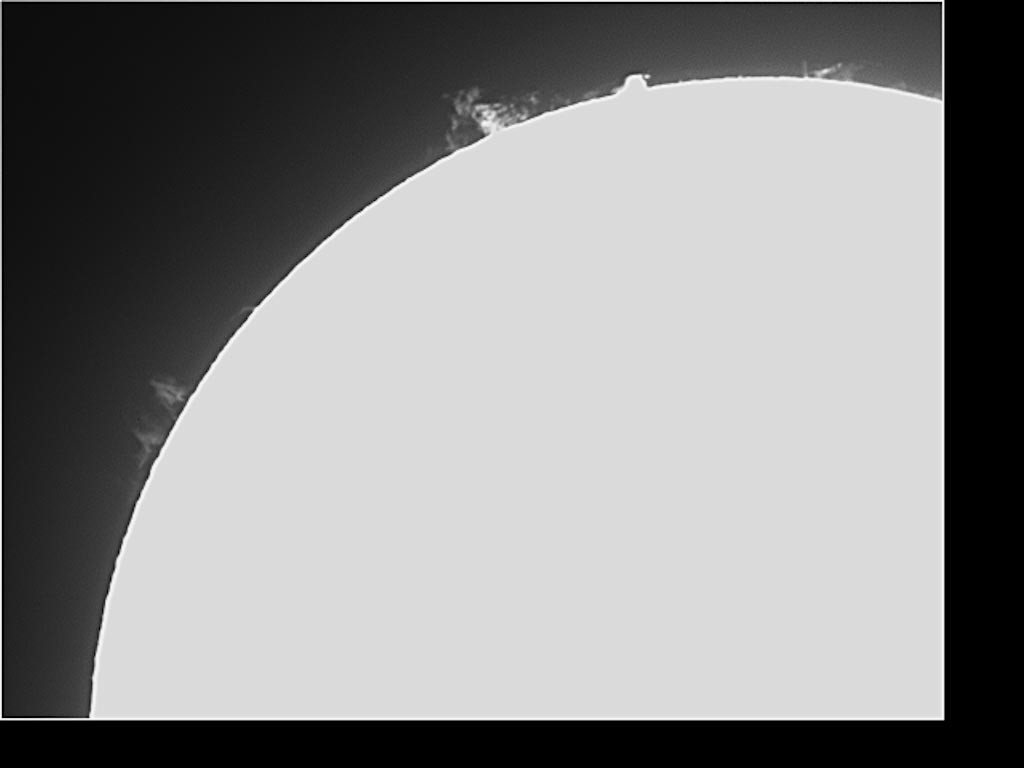
Blowing out the highlights on the disk really enhances the detail of the prominences. I did try to combine this image with others similar to the one below, but no matter what I did, the blend between the two exposures just didn’t look natural 🙁
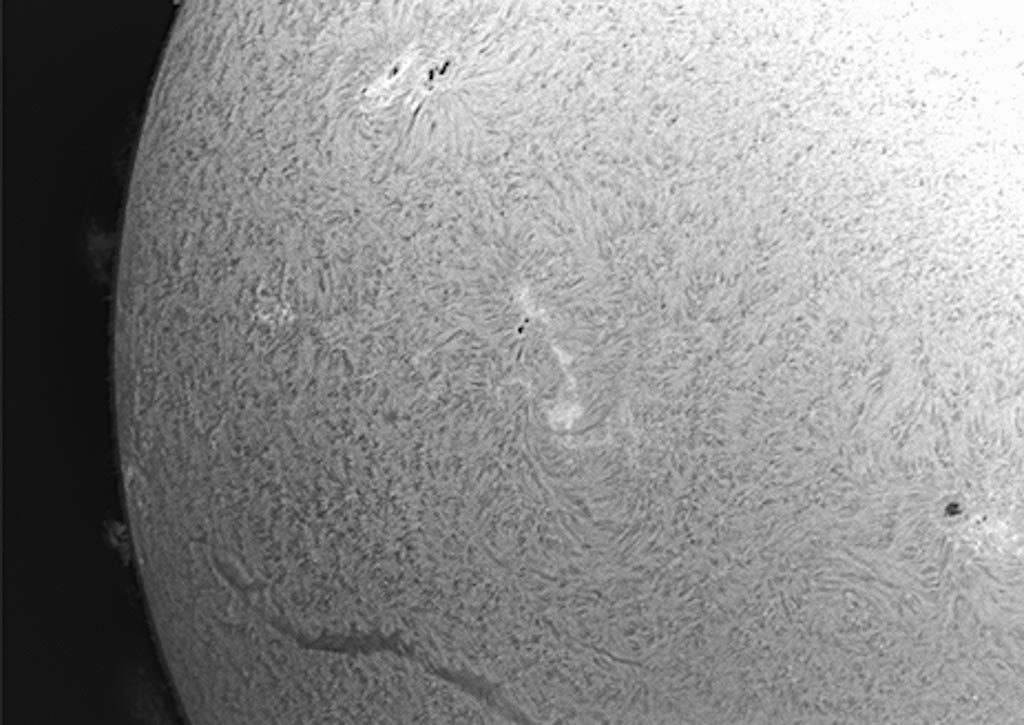
The best of the bunch. The granulation shows less contrast, but it has a greater tonal range and overall, looks a little smoother. I was glad to see that the prominence detail – although faint – still showed through.
While I’m quite happy with these results, I really need to improve detail and use the x2 Barlow. Other improvements to image quality could be made by not imaging too late in the afternoon. Although we live near the sea and the scope is always pointing over green fields in whatever direction its pointing in, there still seems to be considerable thermal currents coming off the land at 3pm when these were taken. There must be a point during the early morning where the Sun is high enough to keep the Air Mass low, but early enough so the ground hasn’t hard time to warm up too much.